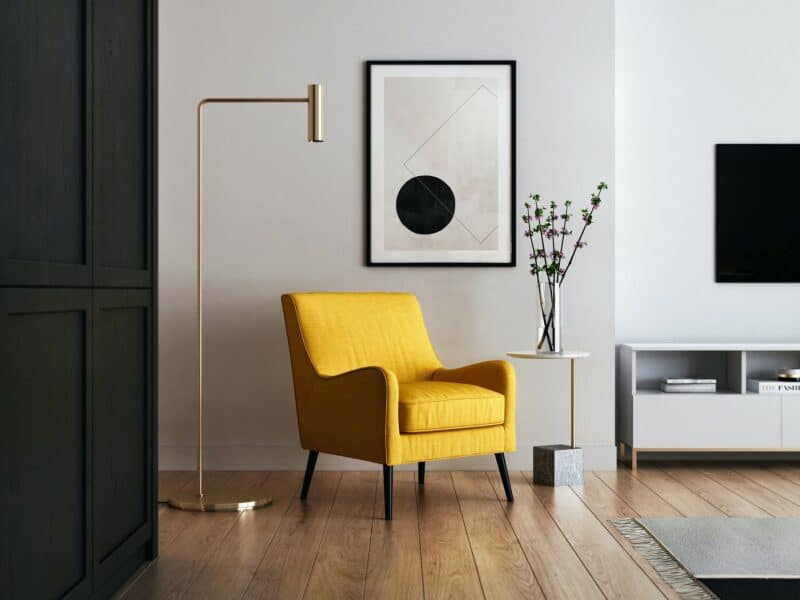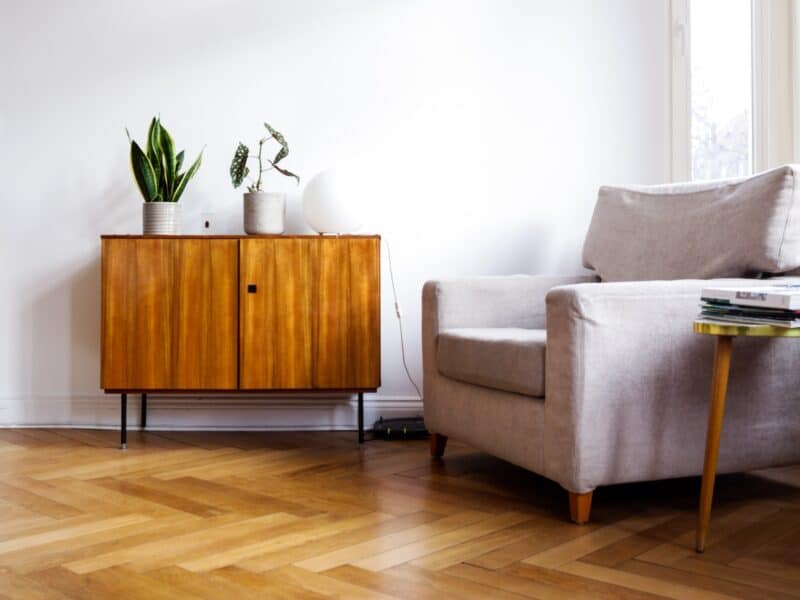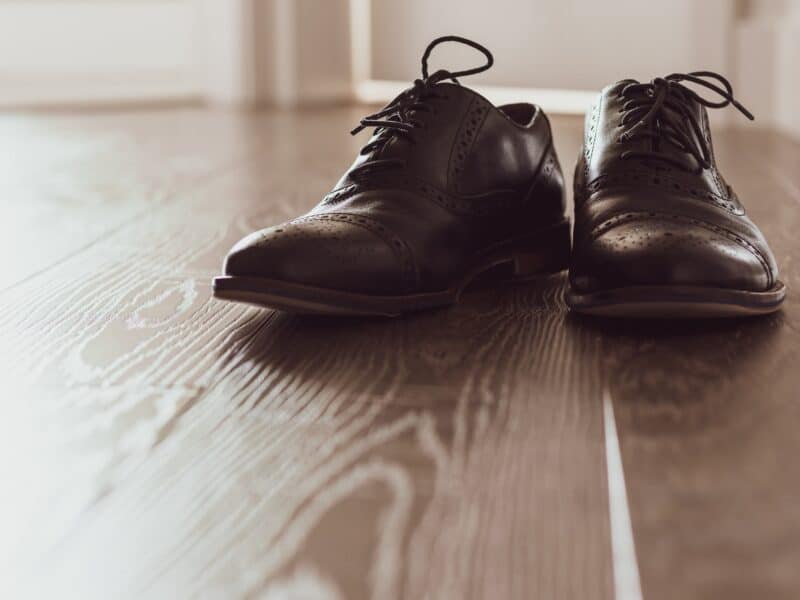
For many people, natural wood floors are the ultimate choice of flooring and a lifetime investment. They feel that the timeless beauty and premium look of hardwood floors far outweighs any negatives of cost and maintenance. But the appearance of your wood floor can depend a lot on the species of wood you choose.
So even if you have your heart set on 68 real wood flooring, take some time to consider the different types of wood and their suitability.
Oak
Oak the most popular type of timber used, there are two main categories used for flooring: Red Oak and White Oak. Most floors are made of the former as it is more plentiful and its beautiful warm pink and red tones give warmth to a room, plus blend well with most colour schemes.
White oak is growing in popularity, particularly as cooler, paler colours are favoured in neutral modern design schemes but also blend well with traditional “country” styles. Furthermore, its relatively impermeability to water makes it a good choice for kitchens and bathrooms.
All oaks take stains well which adds to their popularity as it increases the choice of colours and shades available.
Dark stains, in particular, give a formal feel and are ideal for use in offices or formal rooms of the home. The grain on both types is a combination of straight and wavy patterns although red oak tends to have a coarser and more uneven appearance.
Oak’s popularity stems not only from its colours but also its versatility, being used from ship-building to barrel-making. Its great flexibility means that it will bend and shape easily, making it especially good for floor installation.
However, at the same time, it is an extremely strong and stable wood which rates highly on the Janka scale, meaning that it copes very well with hard use. In fact, its pronounced grain means that it is particularly suitable for areas of high traffic, such as hallways and entrances.
Maple
The durability of maple and its resistance to scratching and denting means that is the top choice for areas of heavy wear and tear, and has been used in such places (e.g. gymnasiums and sports arenas) for decades. In the home, it is ideal for places like kitchens and hallways due to its resistance to marring by pointed objects.
Despite its hardness, maple is still comfortable underfoot due to its inherent “give” but as it is not as stable as oak it may need support from a small perimeter border when floors are being laid, to avoid damage during natural expansion and contraction.
While it does not stain well, it comes in a beautiful range of natural colours, from a pale white-blond to a warm honey tone and its closed grain has very distinctive, attractive patterns, adding to its natural beauty.
Beech
Like maple, beech has been a popular choice for floors that take a lot of wear and tear due to its durability. In fact, its durability and general popularity contributes to its status as one of the most commonly Reclaimed Woods Used in Recycled Flooring.
It is similar in strength to oak and will resist splitting and damage, while at the same time retaining a certain “spring” which makes it flexible and ideal for floors enduring constant high impact.
While it accepts staining well, it comes in a natural range of colours from pale white to dark cherry brown and is often most attractive simply finished with a clear protective urethane coating, particularly as its natural grain is a fine, straight, even pattern which produces an enviable uniform texture.
Its elegant appearance makes it a popular choice for office interiors as well as home settings, blending well with both contemporary and traditional décor schemes.
Birch
One of the main reasons for birch’s popularity is its natural variation in colour, from creamy pale white to deep, rich, red tones.
This colour depends partly on the species and partly on the part of the tree used, with the younger, softer sapwood generally being a pale, creamy tan whereas the heartwood, from the centre of the trunk, being a deeper, richer shade, from golden tan to reddish brown.
It will also stain well and is often finished with a high gloss to emphasize the beauty of its natural colours.
Its grain is fine and straight, with good uniformity in appearance, making it an ideal choice for pieced floors.
Again, birch is similar in strength to oak and is also resistant to splitting and damage. It is slightly softer than oak but extremely durable, making it a good choice as flooring for active families.
This is helped by its mild flexibility as well. Thus, birch is a good choice for high activity living areas as well as office floors.
Ash
Ash is another popular choice for wood floors, due to its clear, light colour and durability. It is often chosen for smaller rooms as its straight grain, combined with its light colour (and in thin planks) can open up the room and give the impression of a bigger, airier space.
Despite its delicate appearance, ash is one of the strongest hardwoods, resisting splitting and damage and coping with heavy wear extremely well. It is harder than oak although not as hard as Brazilian cherry or walnut.
Nevertheless, its durability makes it an ideal choice for high traffic areas such as family rooms and children’s playrooms.
Furthermore, its natural elasticity means that it has a flexible “bounce” and thus good shock resistance. It will also stain well, although most décor schemes tend to take advantage of its natural light colour to brighten up a room, particularly one that does not receive much sunlight.
Cherry
Two types of cherry are used in flooring: Brazilian and American. Both have a reddish tinge but will vary in tone and colour, with American cherry being usually a softer, pink colour that can sometimes be almost as pale as white, while Brazilian cherry tends to be darker and more uniform in appearance.
Both are susceptible to colour change with exposure to light and this is something to keep in mind, particularly if using in a very sunny room.
One big difference between them is hardness, with American cherry considered one of the softer hardwoods and Brazilian considered one of the hardest. It is thus a good choice for a hardwood kitchen floor or other areas that take a lot of heavy use, particularly as it is also extremely moisture-resistant.
Both types are durable, although soft American cherry can scratch and dent more easily but its “bounce” and stability still makes it a good choice for floating floors which can be laid over a sub-floor without the need for any nails or glue.
Walnut
This is a premium wood, often considered one of the most beautiful in the world, with a natural colour that varies from golden brown to almost black and a very fine, even grain.
Walnut is extremely strong, durable, stable and yet flexible, with a natural shock resistance – making it ideal for almost any part of your home.
However, it is generally very expensive and thus is not generally used extensively but more usually just as accents.


